What Is Homeopathy?
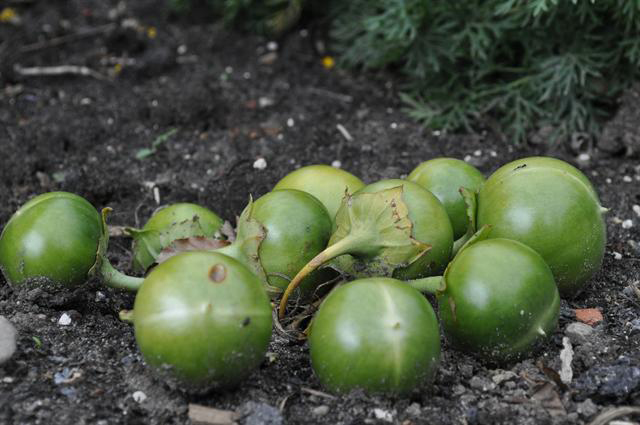
Mandrake Apple
Homeopaths claim that Hippocrates may have originated homeopathy around 400 BC, when he prescribed a small dose of mandrake root to treat mania, knowing it produces mania in much larger doses. I personally know what American Mandrake (Mayapple) can do as I ate some during a hike in the fall of 2013 and had quite the purging experience. Although not what I needed at the time, a purging herb or remedy is sometimes needed. In the 16th century, the pioneer of pharmacology Paracelsus declared that small doses of "what makes a man ill also cures him." Samuel Hahnemann (1755–1843), considered modern day founder of Homeopathy, gave homeopathy its name and expanded its principles in the late 18th century. At that time, mainstream medicine used methods like bloodletting and purging, and administered complex mixtures made from substances including opium, myrrh, and viper's flesh. These treatments often worsened symptoms and sometimes proved fatal. Hahnemann rejected these practices, which had been extolled for centuries as irrational and inadvisable. Instead, he advocated the use of single drugs at lower doses and promoted an immaterial, vitalistic view of how living organisms function, believing that diseases have emotional, as well as physical causes. This is basically the modern theory of Holistic medicine and can even been seen in today's mainstream advertisements for treatment of cancer and substance abuse.
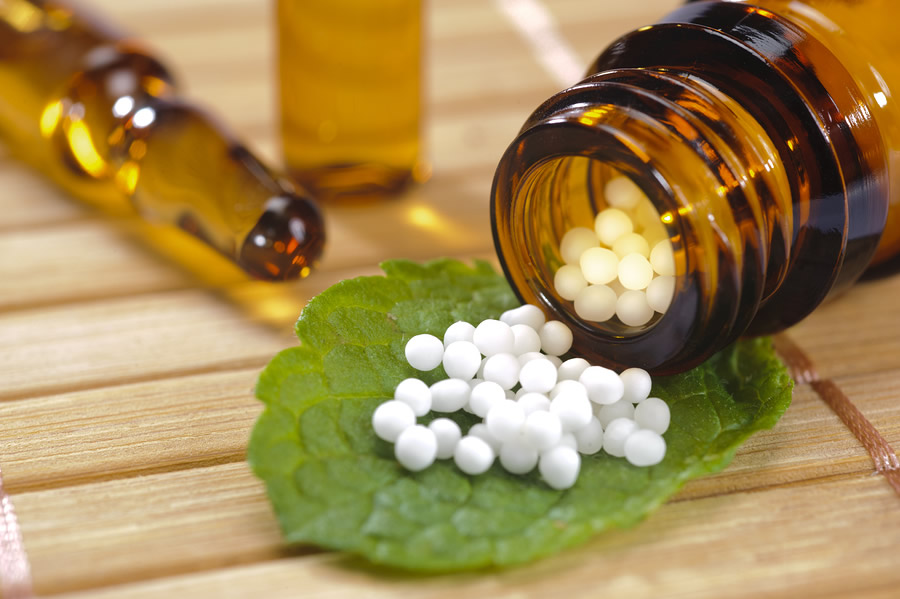
Homeopathic rounds pills
Hahnemann's doctrine is based on the principle of "like cures like", whereby a substance that causes the symptoms of a disease in healthy people will cure similar symptoms in sick people. Hahnemann himself did many of his own provings, where he would ingest something mildly toxic and have his assistant document the peril he would endure as a consequence. These symptoms were recorded and used as guide and when a sick person presented with similar symptoms, the substance that cause those same symptoms in a health person were diluted and given to them as a treatment. I doubt there has ever been a man of any science so dedicated to their belief that they personally endured more as Hahnemann did because he also suffered through many insect and reptile bites too as part of his work. So many people used and believed in Homeopathy that healthy people were paid with national funds from many European countries to participate in provings much like private drug companies do today.
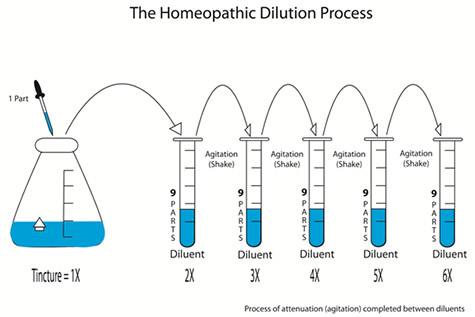
Dilution chart
Hahnemann believed the underlying causes of disease were phenomena that he termed miasms, and that homeopathic remedies addressed these. The remedies are prepared by repeatedly diluting a chosen substance in alcohol or distilled water, followed by forceful striking on an elastic body (successing). For example, a 1X remedy is made by taking 1 part of a mother tincture and diluting it with 9 parts water or alcohol and then successing. A 2X is then made by taking the 1X remedy and diluting it with 9 parts water/alcohol and so on and so on. Dilutions greater than 24X no longer have molecules of the original substance. This is because of the Avogadro constant and is defined as the number of constituent particles (usually atoms or molecules) per mole of a given substance. The Avogadro constant has dimensions of reciprocal mol and its value is equal to 6.02214129(27)×1023 mol. Therefore, at a dilution of 24X or 12C there is no longer any of the original physical substance left in the remedy. Higher dilutions only have the energetic signature of the remedy and thus can never be toxic to the body. They can work at extremely deep levels though and purge conditions that have plagued the body for decades. Homeopaths select remedies by consulting reference books known as repertories, and by considering the totality of the patient's symptoms, personal traits, physical and psychological state, and life history.

Hahnemann statue in Washington
As a man of science and engineering myself, this was initially very hard to believe, but as with most things, personal experience WILL make you a believer regardless of what you thought before the experience. The most profound data of Homeopathy manifested itself during the Spanish influenza pandemic of 1918-1919. The timing of many things, such as WWl, the recent discovery of aspirin and the outbreak of the disease itself combined for a loss of human life the modern world had never seen. World wide the virus took the lives of 20 to 50 million people and made 50 times that many more ill. The virus thinned the blood and people would bleed out internally, much like what we see in Ebola today. If the infected person was given the allopathic treatment of the day, aspirin, the patient had even a lesser chance of living because the aspirin thinned the blood even more. Dr. T.A. Mccann from OH reported that 24,000 cases of the 1919 flu were treated allopathically with a mortality rate of 28.2%, while 26,000 cases of flu were treated homeopathically with a mortality rate of only 1.05%. Dr. G. H. Wright MD of Maryland was quoted as saying "I have attended over one hundred cases without any fatalities and I never deviated from the homeopathic remedy". "This epidemic should encourage us to renew our faith in Homeopathy." Knowing what we know today, if that flu where to break out again, which would you choose? Gelsemium and Bryonia where the two most popular remedies used for the 1919 flu, but Crotalus Horridus (timber rattler venom) was also effective.
Using the principles of like cures like you can see how snake venom, a known blood thinner, would be a candidate to treat a disease that caused the blood to thin. At the surface, this does not make sense, but this is how homeopathy works and works well! Hahnemann is so well respected and revered for his contributions to healing others, that the US government erected a monument in Washington DC to honor him.
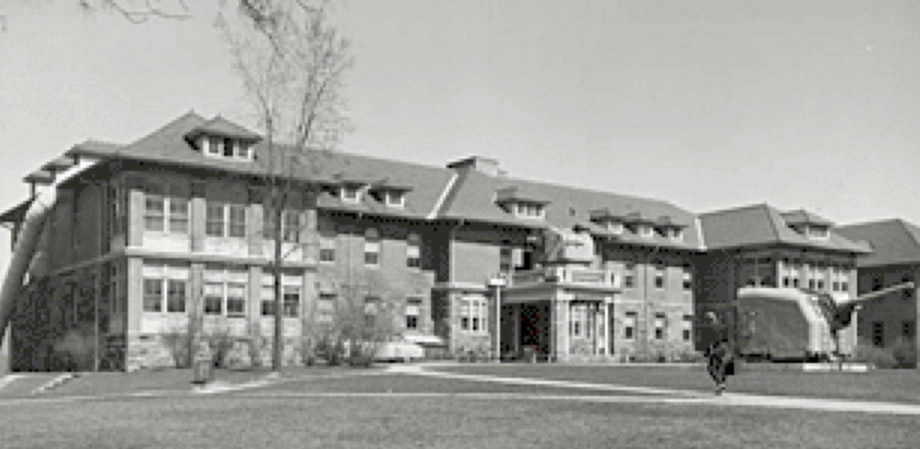
Homeopathic Hospital Built in 1900
In 1844 the American Institute of Homeopathy was founded as the first national American medical society, preceding the American Medical Association (AMA) by several years. Homeopathic medicine is one most inexpensive forms of treatment known and Doctors looking to profit from their profession in the late 1800's were finding it hard to justify their fees since the remedies were so inexpensive. A different and more "sophisticated" medicine started to emerge with the rise of a middle class that had more money to spend on health care. It is of no coincidence that the AMA was formed during this time and doctors looking for a bigger paycheck jumped on board and the rest is history. Michigan has a rich past in homeopathy as one of most renown homeopathic hospitals was built in 1900 on the University of Michigan campus. The hospital cost over $80,000 to build and could house over 140 patients. The U of M had a prosperous homeopathic curriculum, but in 1922 the university discontinued the program. It still stands today and is currently called North Hall.
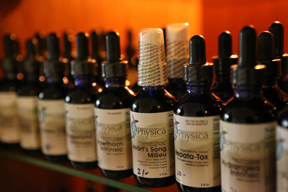
Physica Homeopathic Remedies
Classical Homeopathy involves using a single remedy and waiting several days to see if the remedy resolves the illness. Today's conditions are multifaceted and much more complicated than in Hahnemann's day. Single remedies are sometimes applicable, especially constitutional cell salts, but other times homeochords (a combination of different potencies and remedies) must be used to resolve the condition quickly and completely. This is the reason we at Springfield Holistic use Physica Energetics homeopathics because they use cutting edge technology combined with traditional practices of production to produce remedies that are wide ranging for the complex conditions today.










